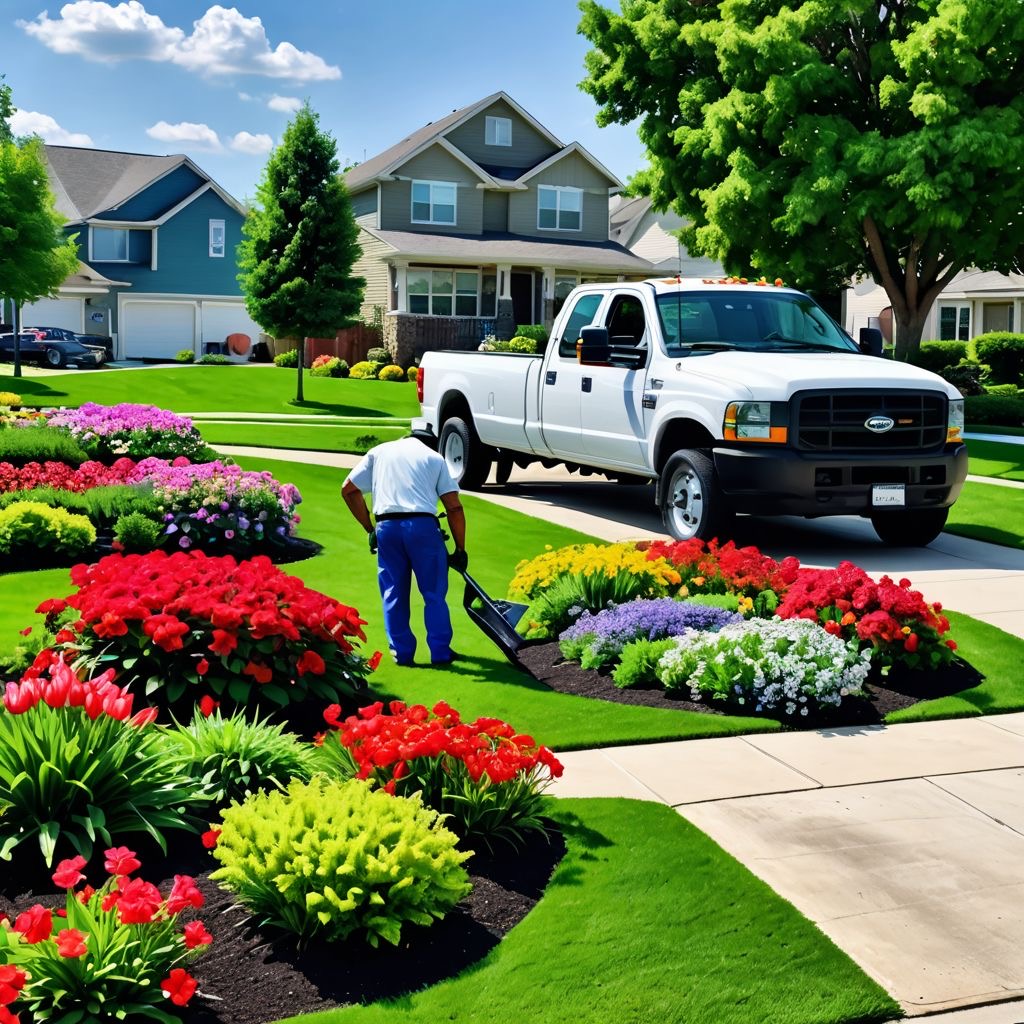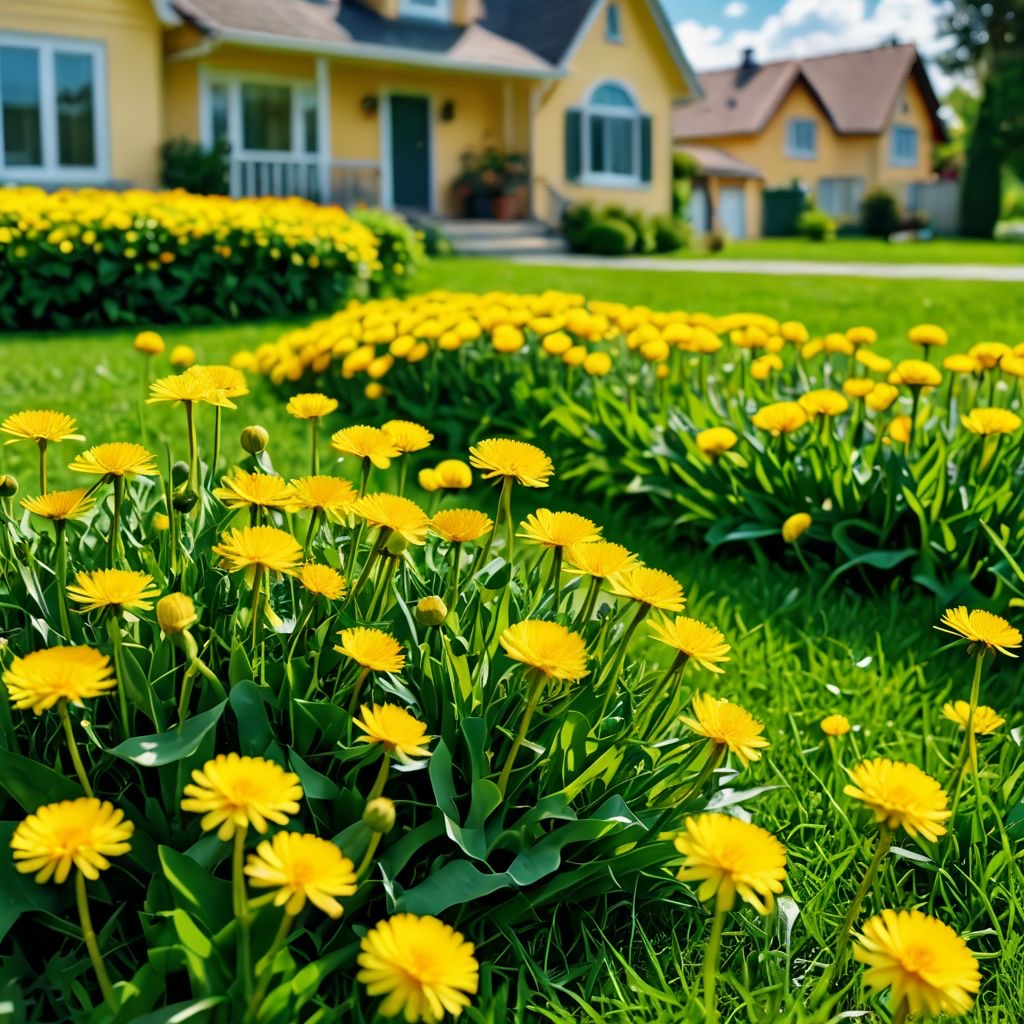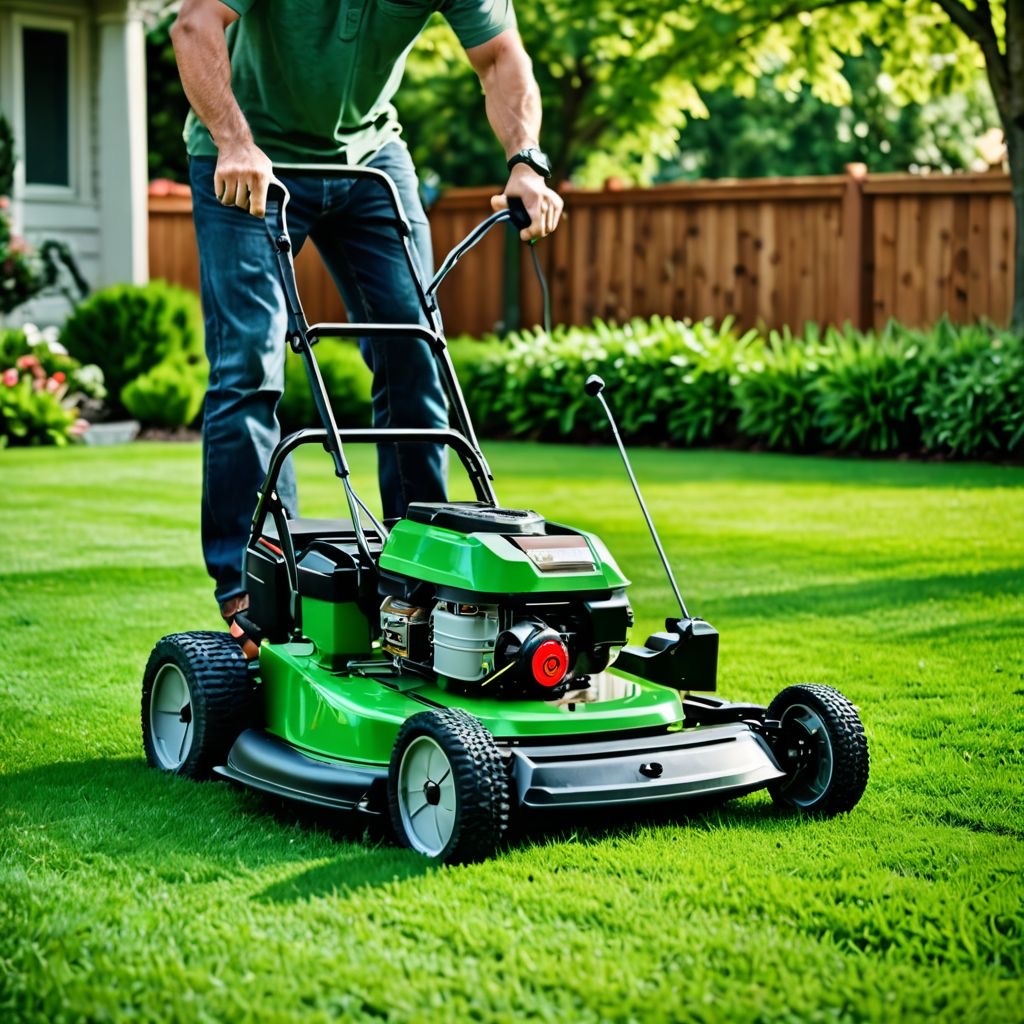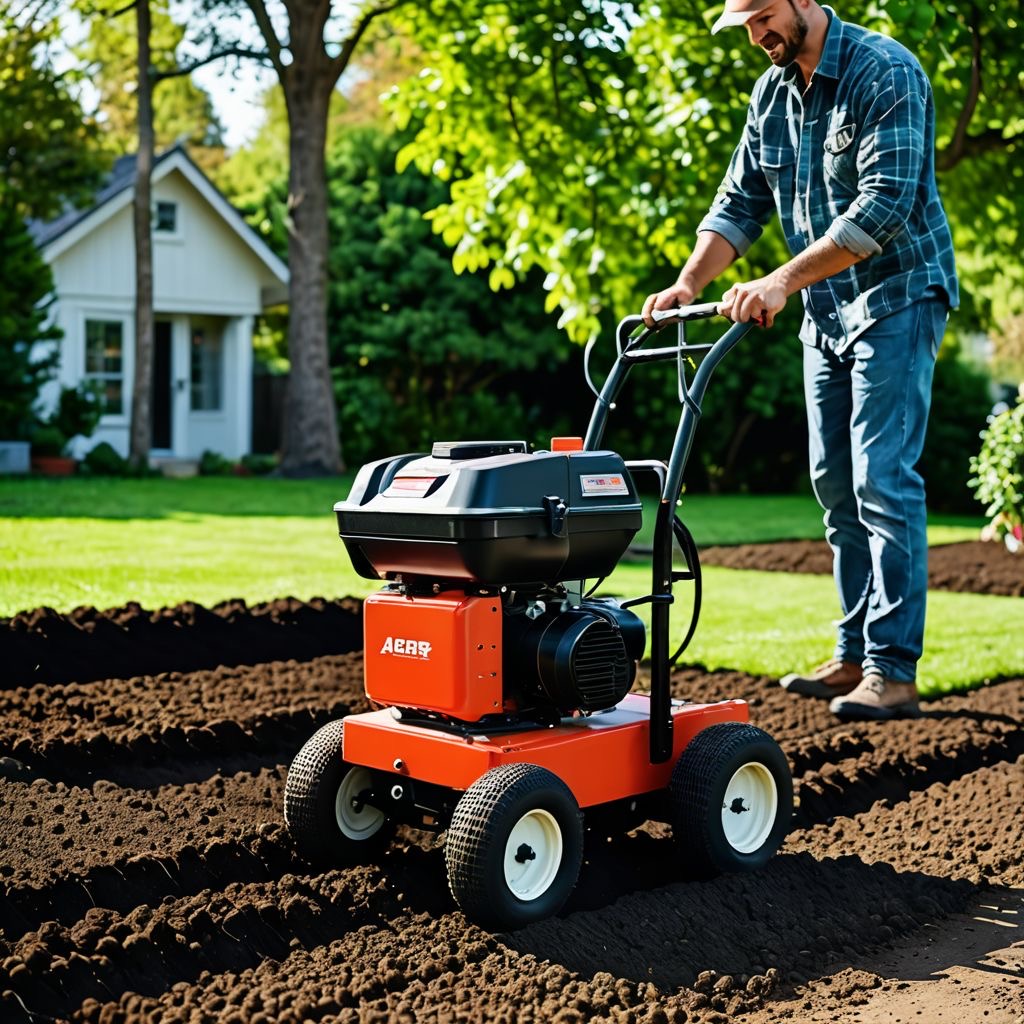
Table of Contents:
1. Introduction
2. How Can I Effectively Control Weeds in My Winnipeg Lawn?
3. What's the Best Way to Manage Lawn Diseases Common in Winnipeg?
4. What Are the Optimal Watering Practices for My Lawn in Winnipeg?
5. What Is the Ideal Mowing Height for Different Grass Types in Winnipeg?
6. What Are the City of Winnipeg's Bylaws Regarding Lawn Maintenance?
7. Conclusion
1. Introduction:
Ah, lawn care—a delightful mix of relaxation, sweat, and the occasional battle with nature. If you’re a homeowner in Winnipeg, you’re no stranger to the joys and challenges of maintaining a lush, green lawn. By 2025, the quest for the perfect lawn isn’t just about aesthetics; it’s about creating an outdoor sanctuary that reflects personal style and community pride. More homeowners are tuning into eco-friendly practices, conscious of how their choices influence the environment and their local ecosystems.
As we kick off the new year, we can’t ignore the burning questions that are likely top-of-mind for many Winnipeg homeowners and even your friendly neighborhood commercial property manager. What’s the best way to tackle those pesky dandelions? How can we ensure our lawns thrive despite the fickle Manitoba weather? From weed control to understanding lawn diseases, maintaining your outdoor living space might feel like an Olympic sport, but it doesn’t have to be that daunting.
This blog is here to guide you through the top five lawn care inquiries that have homeowners scratching their heads, shaking their fists at stubborn weeds, or puzzling over the mysteries of lawn upkeep. With practical tips, clever anecdotes, and a dash of humor, we’ll cover this essential area of lawn care that can make or break your yard's appeal. So grab a snack, get comfortable, and let’s dig deep into the world of lawn maintenance in Winnipeg!
2. How Can I Effectively Control Weeds in My Winnipeg Lawn?

Weeds—those relentless intruders in our otherwise pristine lawns. They’re the uninvited guests of the gardening world, popping up unexpectedly and stealing the spotlight when you’re trying to host a backyard BBQ. Persistent offenders like dandelions and quackgrass are notorious in Winnipeg, but fear not! Here are some environmentally friendly strategies you can use to reclaim your turf from these botanical bandits.
Contact us today for your free estimate.
The Power of Prevention
First off, the best offense is a good defense. A healthy lawn is your best weed deterrent, so start with proper lawn care practices:
- Thicker Turf: Aim for a thicker lawn by nurturing your grass. Use a high-quality seed mix tailored for Winnipeg’s climate. This promotes healthier growth and naturally crowds out weeds. Experts recommend a blend of Kentucky bluegrass, perennial ryegrass, or fescue.
- Fertilization: Fertilize your lawn regularly—preferably with organic options—to fortify your grass. A well-fed lawn can outcompete weeds for nutrients.
- Mowing Smart: Keep your grass height at an optimal length. Taller grass can shade out weeds while also encouraging deeper root growth.
Weed Control Methods
If “prevention is better than cure” feels like an understatement, let’s explore some effective weed control:
- Hand-Pulling: For smaller patches of weeds like dandelions, hand-pulling can be very gratifying. Ensure you pull them out by the root to prevent regrowth.
To Read More About Eco-Friendly options for your Lawn Care CLICK HERE
Contact us today for your free estimate.
- Boiling Water: Sounds like a cooking show, right? Pouring boiling water directly onto weeds is a natural way to boil them away—literally! Just be cautious not to scald your desired plants.
- Vinegar Solution: Vinegar is an excellent herbicide thanks to its acetic acid content. Mix a solution of vinegar and water in a spray bottle and apply it directly to the leaves of those pesky weeds.
- Corn Gluten Meal: This organic pre-emergent herbicide not only suppresses weed seed germination but also acts as a natural fertilizer. Spread it across your lawn at the right time for optimal results.

Engage the Professionals
Lastly, if the weed invasion feels overwhelming, consider calling in the experts. Lawn care services in Winnipeg can provide personalized strategies for effective weed management.
By practicing a combination of prevention, eco-friendly control, and professional intervention, you can conquer those weeds and enjoy the greenery you deserve.
Contact us today for your free estimate.
3. What's the Best Way to Manage Lawn Diseases Common in Winnipeg?
While weeds might be a nuisance, lawn diseases can be the real showstoppers of the gardening world. If you're dealing with snow mold, red thread, or leaf spot, you know exactly what I mean. Luckily, understanding and managing these issues is key to keeping your lawn healthy and thriving.
Identifying Lawn Diseases
1. Snow Mold: Particularly treacherous after snow melts, this fungal disease often manifests as circular patches of gray or pink mold on the turf.
2. Red Thread: This is easy to recognize due to its reddish-brown threads that emerge on grass blades. While it typically appears in cooler and wetter conditions, it can strike unexpectedly.
3. Leaf Spot: Do you see dark spots on your grass? Leaf spot is a fungal disease that commonly arises during warm, humid weather.
Effective Management Strategies
Once you’ve identified the enemy, it’s time to take action. Here’s how to combat these common lawn diseases:
- Proper Watering: Overwatering contributes significantly to disease development. Ensuring proper moisture levels while avoiding soggy soil can reduce the overall risk. A general guideline is watering deeply but less frequently.
- Aeration: Aerating your lawn allows for better air circulation, which can speed up recovery from disease. Plus, it alleviates soil compaction—an added bonus!
To read more about the role of aeration in lawn care Winnipeg CLICK HERE
- Maintaining Lawn Mower Blades: Sharp blades make clean cuts, reducing damage to grass that can lead to disease. Regularly check your mower’s blades and sharpen them as needed.
- Fungicides: If problems persist, consult with a turf expert to determine if a fungicide is necessary. Many modern options are more environmentally friendly and less harmful to beneficial organisms.
Consult the Pros
Engaging with local lawn care professionals who understand the specific diseases prevalent in Winnipeg can provide insights and treatments tailored for your garden’s health. They can also conduct soil tests to identify underlying deficiencies that may contribute to disease susceptibility.
4. What Are the Optimal Watering Practices for My Lawn in Winnipeg?
Watering—it’s the lifeblood of your lawn, and getting it right is crucial to achieving that envy-inducing landscape. Given Winnipeg's variable weather patterns, understanding optimal watering practices is essential for maintaining a healthy lawn year-round.
The Right Amount of Water
A common question homeowners might ask is, “How much water does my lawn really need?” Here’s the scoop:
- General Guideline: Most grasses need about 1 to 1.5 inches of water per week, including rainfall. To gauge this, you can use a rain gauge or a simple container like a tuna can to measure the output of your sprinkler system.
Watering Schedule
1. Timing Matters: Watering in the early morning—between 6 AM and 10 AM—is ideal. The air is cooler, minimizing evaporation, and allowing moisture to seep deeply into the soil.2. Avoid Evening Watering: While it may be tempting to water during the evening, this increases moisture levels overnight, which can create a breeding ground for lawn diseases.
Beyond the Basics: Drought Considerations
Winnipeg summers can sometimes turn dry, making efficient watering even more important. Here are tips to help during those dry spells:
- Deep Watering Techniques: Instead of daily light watering, opt for less frequent but deeper watering sessions. This encourages deep root growth, making your grass more drought-resistant.
- Xeriscaping Techniques: If your lawn shows signs of drought stress, consider using xeriscaping principles. This involves selecting drought-tolerant plants and adjusting landscaping to conserve water.
Use Technology
New irrigation technologies can significantly decrease water usage and improve efficiency. Smart watering systems can gauge moisture levels in the soil and adjust watering accordingly. Talk about a win-win!
5. What Is the Ideal Mowing Height for Different Grass Types in Winnipeg?
Mowing is more than just a chore; it’s an art form that can directly impact the health of your lawn. Cutting your grass at the right height is crucial to plant health, pest resistance, and drought tolerance. Let’s break down the ideal mowing heights for various grass types commonly found in Winnipeg.

Grass Types and Heights
1. Kentucky Bluegrass: This northern favorite thrives in cooler climates and should be mowed at around 2.5 to 3.5 inches tall. Allowing it to remain a bit taller helps the grass develop a deep root system.
2. Perennial Ryegrass: Generally favored for its quick germination, this type can be mowed lower, around 2 to 3 inches. This type of grass often serves as an excellent choice for quick patches or overseeding.
3. Tall Fescue: Known for its drought resistance, this grass type is best mowed at 3 to 4 inches. It can stand up to the summer heat and retain moisture better with longer blades.
Mowing Frequency
- Regular Maintenance: During peak growing seasons, mow every 5-7 days to maintain a healthy lawn. Avoid cutting more than one-third of the grass height at any given mowing session to ensure continual growth.
- Leave Clippings: Consider mulching your clippings by leaving them on your lawn—this returns nutrients to the soil and helps with moisture retention.
Timing Your Mow
1. Time of Day: Mow during cooler parts of the day, such as late afternoon or early evening. This helps prevent stress on the grass and reduces moisture loss.
2. Avoid Wet Grass: Mowing during or right after rainfall can lead to uneven cuts and unhealthy grass. Wait until your lawn is dry, allowing for cleaner cuts and preventing clumping.
6. What Are the City of Winnipeg's Bylaws Regarding Lawn Maintenance?
Like all great cities, Winnipeg has rules and guidelines to keep the city beautiful and functional. As a homeowner, it’s essential to know the local laws regarding lawn maintenance—these govern everything from grass height to weed control.
Grass Height Regulations

According to municipal regulations, grass on your property should typically not exceed 15 centimeters (6 inches) in height. If you're being a grass rebel, you may face fines for failure to comply.
Weed Control Guidelines
In Winnipeg, homeowners are responsible for controlling noxious weeds on their properties. This includes common offenders like dandelions or thistles. If you're not sure about the weeds in your yard, simply consult the City of Winnipeg's website, where you can find a list of prohibited species.
Mowing and Maintenance Hours
To read more about lawn care Winnipeg etiquette, CLICK HERE
Contact us today for your free estimate.
1. Mowing Hours: The City has specific hours for yard work, including mowing. Most municipalities state that yard maintenance activities, including mowing, should not occur before 7 AM or after 9 PM on weekdays and 9 AM to 9 PM on weekends and holidays.
2. Boulevard Maintenance: If you live in a home with a boulevard adjacent to your property, don’t forget: You’re responsible for maintaining that patch of green! This means keeping it tidy and ensuring compliance with local regulations.
Staying Informed
Stay updated on local regulations through the City of Winnipeg’s official website. Understanding these bylaws not only helps avoid fines but also allows you to play a role in keeping your community looking sharp.
7. Conclusion:
As we wrap up this journey through the essential lawn care questions in Winnipeg, it’s clear that maintaining a beautiful, healthy lawn is both an art and a science—one that combines attention to detail with a willingness to adapt to local conditions. Understanding weed control, lawn disease management, optimal watering practices, lawn mowing techniques, and local bylaws equips homeowners with the tools necessary to achieve their outdoor dreams.
In 2025, the trend towards environmentally friendly practices continues to gain momentum. As homeowners, we can engage with our neighborhoods and contribute to a greener Winnipeg, one lawn at a time. Whether it’s tackling those stubborn weeds or understanding what the local bylaws say about lawn maintenance, the knowledge gathered here can empower you as a homeowner in managing your lawn effectively.
So the next time you step into your yard, you’ll be armed not just with a lawnmower but with insights that will keep your grass greener, healthier, and more vibrant than ever before. Happy gardening! Your lawn—and the planet—will thank you.
Contact us today for your free estimate.
Don't miss out! Click here to subscribe today and get the latest blog posts delivered straight to your inbox.





